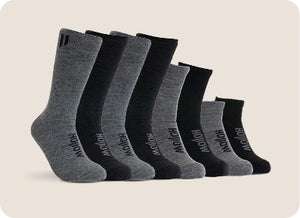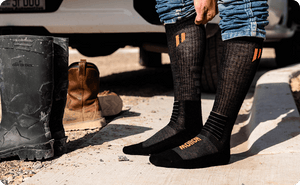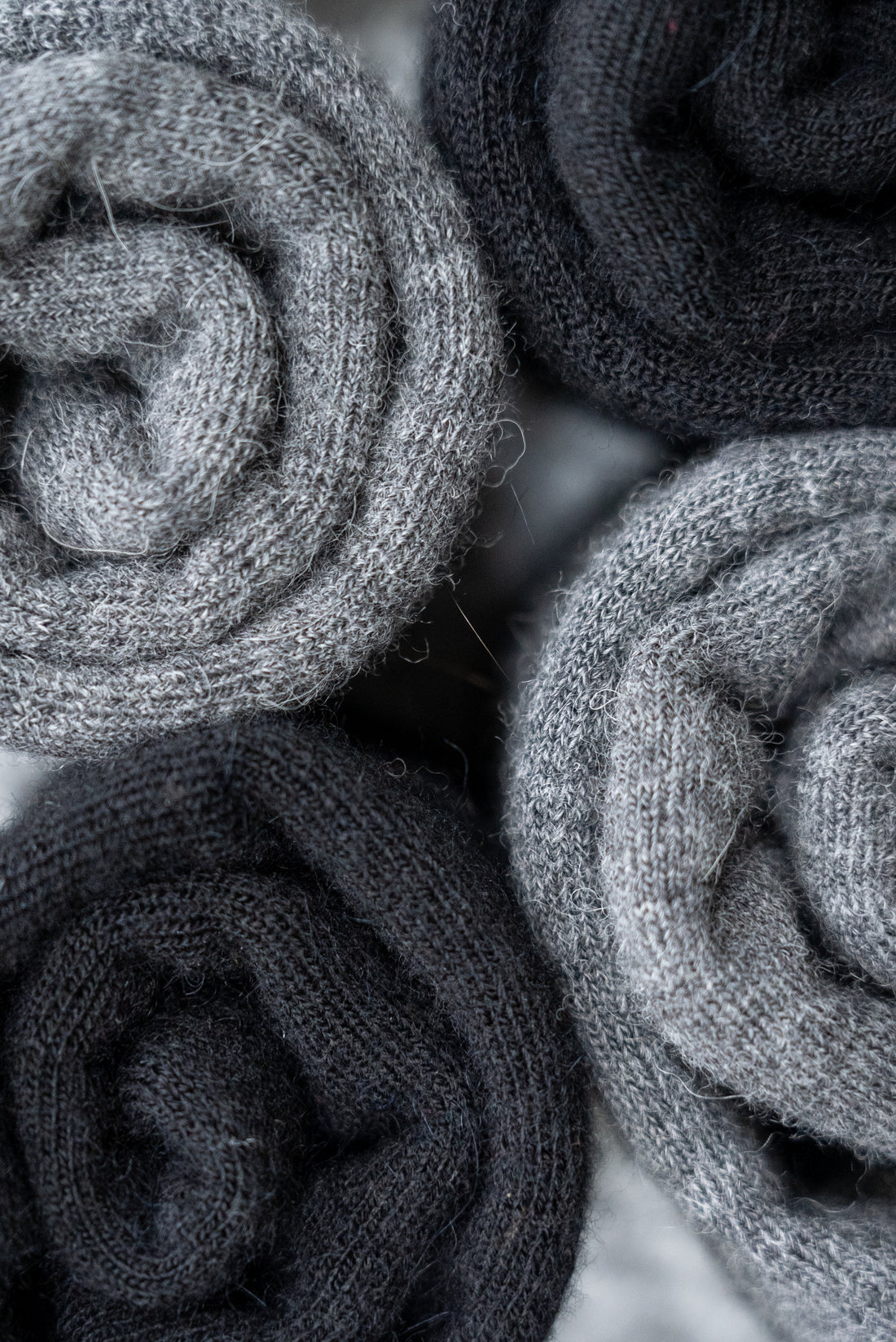Alpaca Wool Vs. Synthetic Fiber – Which Is The Better Option?
Over the years, a lot of people have started to use synthetic fibers over natural fibers like alpaca. One of the reasons behind their popularity is the lower cost involved. Moreover, they are often substituted for natural materials.
This often means that unless you know the difference between the two, you could end up buying synthetic fiber without even realizing it. Today, you can find synthetic fibers in many different names, such as:
- Acrylic
- Polyester
- Polyamide
- Nylon
- Elastic
- Microfiber
- Modacrylic
- Modal
- Payette
- Rayon
- Spandex
- Tencel
A major reason for the popularity behind synthetic fibers is the strong belief that they are better than natural fibers, in terms of durability and price-wise which is true, but do they perform better?
Natural fibers include the following types of materials:
- Silk
- Cotton
- Cashmere
- Alpaca wool
- Angora wool
- Bamboo
- Guanaco
- Hemp
- Linen
- Llama
- Merino wool
- Mink
- Mohair
However, there has been a lot of talk recently that natural fibers such as alpaca are better than synthetic fibers. Alpaca wool, in particular, has become a new favorite, particularly because of the amazing qualities it has.
While in the past, this wool was higher priced and rare to find, today there are plenty of alpaca breeders established locally and across the world. This has led to a lower pricing point for the wool and more ethical practices of wool harvesting being enforced.
As a result of this, alpaca is often commonly used, even in sweaters and alpaca socks have become a favorite, especially among athletes, hikers, and outdoor enthusiasts. This has led to a lot of comparisons, particularly about synthetic yarns vs. natural yarns.
But is there truly a difference here? Are you wondering whether you should opt for alpaca socks or stay with the synthetic fiber socks you have? The answer is really BOTH! Blending natural fibers with synthetics yields the absolute best performance sock available. These blends make for tougher socks that last for years and perform with the characteristics of naturals.
We’re taking a comparative look at both these socks here:
Temperature Control
This relates to the thermal qualities of the fibers. In this case, natural fibers such as alpaca wool are known to be extremely thermal and inherently stay warm. In fact, these kinds of socks and clothing are used even by Arctic explorers.
What’s best about alpaca wool socks is that they don’t just keep you warm during the winters – they can also keep you cool in the summers or any other hot weather. Natural fibers tend to be more breathable and allow heat to release slowly from the body.
In contrast to this, synthetic fibers are known to have low thermal qualities. You will have to buy different pairs for different functions. This means that synthetic fiber socks for warm climates cannot be worn during the winters and vice versa. This lack of flexibility means that you can’t use them interchangeably as you would with alpaca wool socks. Follow Hollow socks use enough synthetics for toughness and stretch, but let the bulk of the comfort work to be done by our custom blended alpaca thread.
Washability
This relates to how easy a fabric is to wash. Nowadays, machine washing is more common, but unless the machine is designed for it, your alpaca wool socks may suffer when washed in it. As a general rule, any natural fiber clothing items need to be washed by hand.
However, certain natural fibers like linen, hemp, and cotton can easily be washed in machines. With alpaca wool and other natural fibers, care has to be taken. Nonetheless, the ability to hand wash them comes in handy, especially for hikers who are gone on long treks. For them, it is not possible to machine wash clothes.
In this case, synthetic fibers are very easy to wash in machines. However, it is not a good idea to wash them with heat. The heat can often cause the synthetic fibers to release toxins into the surroundings. Additionally, heat can also make them more likely to lose their shape and elasticity. Care has to be taken when washing these as well.
Again the right answer is to blend synthetics with naturals that help hold shape and retain "memory" of the sock after washing and drying, but still letting the natural fiber be the star of the show.
Elasticity
Natural fibers such as alpaca wool are known to be fundamentally elastic in nature. In fact, some types of natural fibers can be more elastic than other natural fibers. This is why it is important to buy the right sizes.
The elasticity of the fiber can mean that it will expand to different shapes. When the sock is new, the elasticity will allow it to come back to size, but overtime, the sock can completely lose this function.
In comparison to this, synthetic fibers are known not to be elastic. Fabric types such as acrylic or polyester are known to not be elastic, especially on their own. As a result of this, they are often blended with other fibers or natural fibers to make them more elastic and easy to use.
Breathability
This is the biggest reason why natural fibers like alpaca wool are so favored by athletes and anyone interested in hiking, trekking, hunting or more. These fibers are extremely breathable and moisture-wicking, allowing the body to stay cool during summers and warm during the winters.
This is a fiber type that works with the body. Additionally, they also allow for good foot health, especially since they prevent sweat from collecting in the feet. This can save one from getting blisters, fungal infections, or bacterial infections.
Unfortunately, synthetic fibers have little to no breathability and are often made with mixed fibers to emulate this quality. Many synthetic fibers are made from petroleum-based plastics. Without any mixed fibers, it can be akin to sweating in a plastic bag.
Strength
The strength of any fiber varies a lot, and while natural fibers are strong, there are some weak ones as well. Alpaca wool is a strong fiber type, but it’s not the strongest natural fiber. In this case, silk is the strongest fiber that is known in the world, but pure silk socks are not high performing in other areas. Again blending the fibers is the right answer. Alpaca wool + silk + synthetics is something we are researching and think holds promise as an excellent all-around performer.
For good strength, you can have an alpaca wool sock that has some silk or look at the knitting type. Socks with braided constructions can ensure that even if a weak fabric is used, it will still be strong and put up with the wear and tear with ease.
The same factor applies to synthetic fibers as well because their strength can also vary a lot. However, they are often used in place of natural fibers to substitute for the strength of natural fibers. It helps to make them extremely versatile, but given the downsides associated with them, it’s not a good idea to opt for them.
Softness
When it comes to the luxury and softness that alpaca wool socks can offer, it is not surprising that no other synthetic fiber will come close to it.
The softness of natural fibers makes them perfect for people with sensitive skin to use. Modern spinning techniques have made sure that wool products like alpaca wool are extremely soft and do not have the scratchy, irritating texture that old ones have. We utilize "baby alpaca" in our blend which really just means it is a finer wool than virtually any other alpaca or natural fiber available at a reasonable price point.
Synthetic yarns cannot compare to the softness of natural fibers.
Price
Natural fibers, like alpaca wool, are known to be considerably more expensive because the cost of production is divided. When you’re opting for natural fibers, you are paying not only for the product but also contributing to the sustainability of small producers, their animals, or plants.
To produce natural fibers, a lot of labor goes into it, such as raising the animal, shearing it, cleaning the wool, processing it, making wool yard out of it, and making the sock. In the past, many people did try to take short cuts in the process, which led to the unethical abuse of the animals.
However, today more buyers and consumers are aware and buying products that have been sourced in an ethical manner. Given this aspect, the higher cost of natural fibers is well worth the price.
Synthetic fibers are very inexpensive. This is because producing them does not require a lot of time, effort, or even raw material. Synthetic fibers are made from petroleum by-products. These are not only plentiful but are easily processed in large machines. The downside is the use of petrochemicals against your skin while you sweat.
Allergic Reactions/Health Concerns
When it comes to natural fibers, there are some health concerns, largely allergic reactions associated with it. People with sensitive skin usually cannot have sheep wool socks because of the natural lanolin that sheep wool contains. It can lead to skin irritation, rashes, or even sores.
Additionally, poor cleaning of the fibers can also mean that the wool has grass or seeds in it that has not been removed. Luckily, fibers like alpaca wool are known to be hypoallergenic in nature. Using these will not cause an allergic reaction, and people with sensitive skin can wear them too.
Unfortunately, synthetic fibers are known to cause allergic reactions in people too. Wearing them from prolonged periods of time can cause rashes, redness, and skin irritation. Additionally, poor moisture-wicking qualities increase the chances of someone developing fungal infections, bacterial infections, and even more.
While both fibers can affect sensitive skin, natural fibers are still better for your skin than synthetic ones.
Bio-Degradability
Given the amount of pollution in the world, more people are opting for materials that are eco-friendly and biodegradable. In this light, natural fibers are known to be biodegradable. This means that when they are discarded, they can be broken down and do not leave any toxic waste or contribute to waste.
Even recycling them is easier as they can be composted and even remade into something new. In this case, synthetic fibers do not measure up at all.
Flammability
When it comes to flammability, natural fibers like alpaca wool and sheep wool are known to be flame resistant by nature. Yes, wool does smolder or char when it is exposed to an open flame, but that is all. It does not burn as cotton does. This is why wool blankets are often recommended as a tool to extinguish the flames on fire.
In contrast, synthetic fibers do not just burn; they start to melt. They can melt and adhere to the skin, causing painful burns. When exposed to fire, many release chemicals which can create toxic smoke.

Conclusion
It is clear to see that alpaca wool socks are a great choice, especially when artfully blended with synthetics. The reason for this lies in using the alpacas moisture-wicking qualities, thermal abilities combined with synthetics durability.
Synthetic fibers are a form of plastic and can have negative repercussions for you and the environment. In this case, you want to make sure that you are getting the best option for you find a sock that maximizes the natural fiber content percentage while utilizing just enough synthetics to offer a performance fit and finish.













